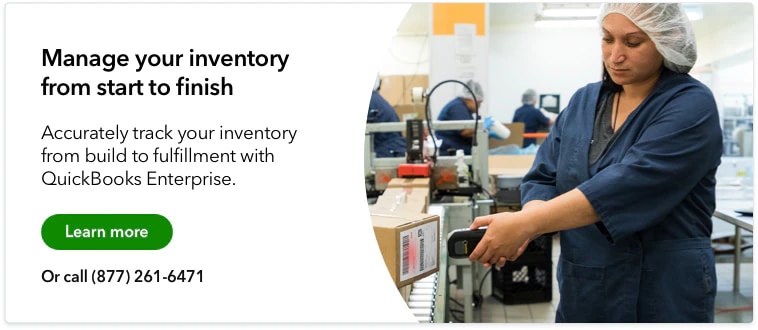The foundation of a well-run warehouse isgood organization. Having all your inventory items in the right place lets pickers put orders together quickly and get them out the door faster.
One way to improve your warehouse operations is with slotting, which organizes inventory according to size, order velocity, and other factors. Many companies use slotting as a way to increase efficiency and maximize space.
What is slotting?
Slotting is the process of organizing a warehouse and its inventory to maximize efficiency. It involves analyzing and understanding a company’s inventory or SKUs, including item size, items frequently bought together, seasonal forecasts, and more.
This data creates a slotting strategy tailored to your warehouse inventory and sales. The main purpose of slotting is to ensure a company’s warehouse is optimized for productivity and space utilization.
(Note: Slotting can also refer to product placement in retail stores. This is commonly used in bookstores, boutiques, supermarkets, and the like, where a slotting fee is charged for shelf space and stocking a product. This article covers the slotting process specific to a company’s warehouse.)
Macro vs. Micro slotting
Slotting is divided into two types: macro slotting and micro slotting. Macro slotting looks at the entire warehouse or distribution center’s big picture and considers the overall layout and area.
Micro slotting, on the other hand, focuses on the careful placement of individual items, from the designated SKU area down to its specific storage medium.
Its goal is to make sure each SKU is placed at the most optimal point along the pick path, which is the route taken by pickers when accomplishing warehouse tasks. With both slotting types, the main purpose is to maximize efficiency and space while decreasing the amount of time and errors in finding an item’s location.
Why should you use slotting in your warehouse operations?
Slotting is one of the best practices to keep a warehouse organized and running optimally. It prompts a business to consider the overall warehouse layout and the best place for every SKU.
Rather than allowing inventory to pile up until it’s sold, slotting anticipates warehouse workflow ahead of time and creates a plan to optimize it as much as possible.
If there are inefficiencies, such as common bottlenecks or difficulties locating an SKU, slotting can eliminate these issues. With everything in its proper place, slotting increases productivity and throughput.
How does slotting work?
Slotting is common among businesses that stock inventory in a warehouse or distribution center. This may be inventory directly sold to consumers, such as in retail and e-commerce, or to other businesses, like distributors and manufacturers.
These companies deal with large quantities of moving inventory daily—a process that can be improved with efficient slotting strategy.
For example, a coffee wholesaler adding to its inventory might assume it needs a bigger space and more employees.
It decides to apply slotting, starting with analyzing its current sales and SKU data. It moves larger and slower-moving items (e.g., espresso machines, coffee grinders) to the back, while bestsellers and promotional items (e.g., coffee beans, filters) are relocated to areas with easier access.
Coffee beans and other temperature-sensitive items are kept from heat sources or windows to prevent spoilage.
By reorganizing inventory according to actual sales and warehouse movement SKUs are easier to find, making pickers more productive. QuickBooks Enterprise helps fulfill sales orders faster by sending pick instructions to mobile barcode scanners for more efficient order fulfillment.
What are the benefits of slotting?
While warehouse slotting takes dedicated time and effort, it yields many benefits when done correctly.
Promotes efficiency
Slotting saves a considerable amount of time and effort spent on routine tasks. By intentionally placing SKUs in the most convenient location for pickers, it plots the shortest pick path to get tasks done, reducing unnecessary guesswork and travel time while increasing productivity.
Going back to our previous coffee wholesaler example, data indicates items like beans and filters are frequently purchased together. This tells the wholesaler that coffee and filters are better stored near each other (even if filters aren’t temperature sensitive). Grouping items with product affinity helps shorten the total travel time (amount of time it takes a picker to pick inventory items) in fulfilling an order.
Maximizes resources and lowers cost
A major benefit of slotting is increased productivity and storage capacity within the same space. Taking the time to reassess current warehouse management systems ensures a company maximizes existing resources before renting another space or hiring more staff.
Say the coffee wholesaler starts selling espresso machines and commercial equipment that require a cart or platform truck to move through the warehouse. A slotting strategy places these larger SKUs together at the back of the warehouse.
This arrangement keeps all bulky moving equipment parked in one area and prevents the movement of heavier SKUs from creating any bottlenecks in other areas. Pickers can start at the back, placing the heavy items at the bottom of the cart and lighter ones on top as they move through the warehouse.
Optimizes overall sales and throughput
Slotting takes a proactive approach to warehouse organization, giving companies a better grasp of their inventory and operations. Not only does it allow orders to be fulfilled easily and quickly, but slotting also opens other growth opportunities—without any significant costs or changes to infrastructure.
For example, with slotting, our coffee wholesaler could process and ship SKUs faster, reducing carrying costs. They can also create more space for their most popular inventory items to meet customer demand and reduce stockouts. These improvements would allow them to expand their product lines and increase sales.
Are there instances where slotting would not be useful?
While slotting is an effective strategy for organizing a warehouse, it’s not as useful for companies with only a few types of inventory.
Slotting best determines the optimal layout and placement of various SKUs and order activities. However, it doesn’t add much value when a company’s inventory is relatively similar in dimensions, weight, or line velocity.
Reorganizing a warehouse also takes some time and shouldn’t be done during a hectic sales season or when the required data and resources aren't available.
How to get started using slotting in your business
Effective warehouse slotting starts with accurate data. A year’s worth of data is ideal, allowing you to account for seasonality and trends. For each SKU, gather as much of the following data as possible, including if possible:
- Key SKU data: item dimensions, weight, material composition, specifications, etc.
- Average inventory levels, reorder frequency, and reorder quantity
- Order picking history and sales forecast, accounting for any seasonal fluctuations
- Line velocity, or how fast a specific SKU moves out of inventory
- Product affinity, or SKUs frequently bought together
Other important factors include shipping commitments, such as international or expedited shipping, and the total warehouse square footage, height, and fixtures.
This data is then used to develop a warehouse slotting strategy. Using a method called “ABC slotting” (or ABC inventory analysis), a company can rank all inventory according to its line velocity.
The best-sellers are in group “A,” followed by the average movers in group “B,” and finally the slower movers in group “C.”
With the SKUs grouped together, it’s time to assess inventory storage within the warehouse. Start by pinpointing the most accessible areas that align with your barcode inventory system and optimal pick path.
Finally, assign the fastest-moving SKUs in group A to the most accessible locations close to the pick path. Place group B in the following location, and group C toward the back or least accessible areas of the warehouse.
This is a general slotting strategy, and it’s always best to adapt them to your specific inventory and sales data. For example, if certain SKUs are frequently bought together, place them close together. If others require moving equipment, keep them in one area.
Three best practices for efficient warehouse slotting
Once you get up and running with warehouse slotting, here are three best practices to remember for efficient warehouse operations.
Listen to picker feedback
No one knows how effective a new slotting strategy is better than pickers. Ask for their feedback on improving a slotting strategy before and after implementation. Pickers usually have information on warehouse operations unavailable in any data set or forecast.
Regularly review your slotting strategy
As seasonal trends change and new SKUs are added and removed, slotting strategies must be updated. Reviews can be done monthly or quarterly or alongside cycle counts. If there is any shift in sales demand or decrease in efficiency, the area or entire warehouse may require reslotting.
Consider a software solution to aid slotting strategy
Warehouse inventory is constantly shifting to meet sales and market demand, and keeping a slotting strategy up-to-date can become time-consuming. An all-in-one business solution like QuickBooks Enterprise supplements slotting efforts by effectively organizing inventory with intuitive multi-level categorization, along with a central dashboard that tracks real-time inventory levels down to the specific pallet or bin.
Final Thoughts
Many companies are likely already using some form of warehouse organization. Slotting, however, considers all factors, from the overall layout to individual SKU slot placements. The strategy can also be applied to most warehouses without a significant cost and adapts to your company’s specific needs.














